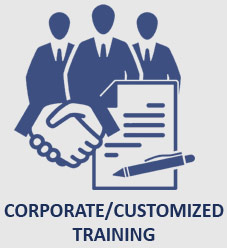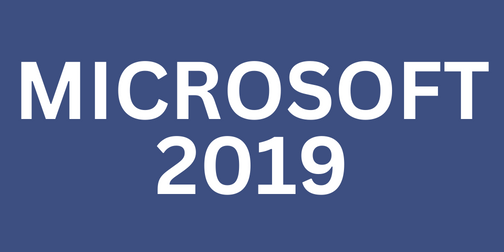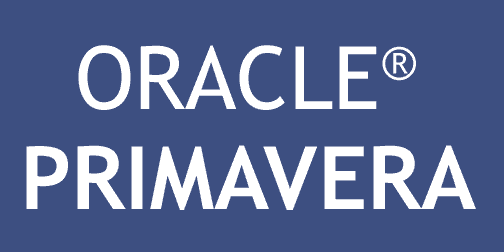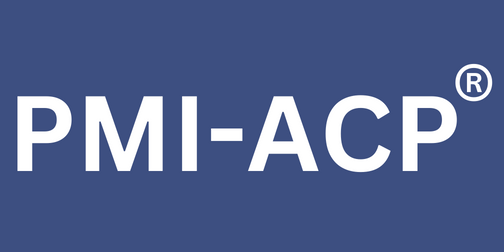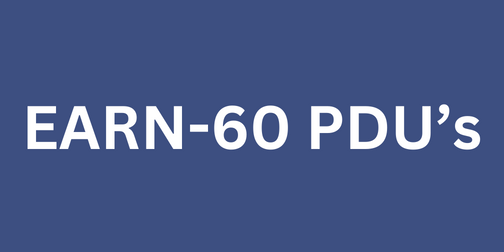
How to Run a Better Status Meeting
Posted On October 21, 2024 - 12:19 PM
Status meetings are an essential aspect of managing projects. They keep the team on the same page in identifying obstacles and making sure all parties are on the same level. However, they are often given negative reviews for being ineffective, time-consuming, or boring. However, by using a few strategies, you can make your meetings engaging, productive sessions that propel your initiatives ahead.
In this blog, we'll discuss everything you need to know to conduct better status meetings, from establishing an agenda with a clear goal to engaging your team members and following up efficiently. In the end, you'll have practical strategies to ensure that your status meetings are an effective component of your project management plan.
Why Status Meetings Matter
Before we get deep into "how," it's important to understand why status meetings are crucial. Status meetings provide several key benefits:
-
Progression Tracking: Meetings like these provide an easy way to monitor the progress of projects, making sure that everyone has met the deadlines and goals.
-
Team alignment: Status meetings ensure that the team is aware of their work, helping to reduce confusion and encouraging collaboration.
-
Issue Recognition: Problems can be detected early and dealt with before they become more serious.
-
Accountability: Regular updates on status provide accountability and encourage team members to stay focused on their work.
But, if they are not properly managed these meetings can turn into time-consuming and that's why the importance of optimizing them is paramount.
Step 1: Define the Purpose of the Meeting
The most crucial aspect of running a successful status meeting is to establish the purpose of the meeting. Many times, these meetings get lost in irrelevant discussions. To avoid this, make sure that the goal is clear.
Ask Yourself:
-
Are we monitoring progress towards the goal of a particular date?
-
Does this gathering discuss blockers?
-
Are we updating our stakeholders and internal staff?
After you've determined the primary purpose of your meeting ensure that it is clear to everyone who attends. Think about including this in the invite to the meeting as well as on the agenda to define expectations.
Step 2: Limit the Meeting Length and Frequency
A common error in status meetings is to make them excessively long or frequent. An excessively long or frequent gathering can reduce productivity and result in burning out. The best frequency and length of the meeting will depend on the size and complexity of the task, but generally:
-
Limit meetings to 30 to 45 minutes: This length is sufficient to cover the most important subjects, yet short enough to keep the focus.
-
Weekly or biweekly meetings are typically enough: For projects that are moving quickly, it is possible to choose daily stand-ups, but for most projects the weekly status meeting is adequate.
The most important thing is to find the right balance that allows the meetings to be frequent enough to keep you updated, but not so frequently that the meeting becomes routine.
Step 3: Prepare an Agenda and Stick to It
An agenda is the basis of any successful meeting. Without it, meetings could easily diverge. When creating an agenda, take note of the following aspects:
-
Create a consistent structure: A solid structure can include a brief progress report a discussion of any obstacles and a look ahead of upcoming projects.
-
The agenda should be circulated before the meeting: This allows team members time to plan their updates as well as any possible questions.
-
Timebox your agenda for meetings: You should assign specific time slots to each subject, making sure you don't take up too much time on a single topic.
Example Agenda for a 30-Minute Meeting:
-
Introduction and the purpose (2 minutes)
-
Status updates for each individual (15 minutes)
-
Discussion on obstructions to roads (10 minutes)
-
Action items and next steps (3 minutes)
Be sure to stick in your agenda, while gently guiding the conversation to its original topic if required.
Step 4: Encourage Concise Updates
When teams meet for status updates, members are often prone to provide long, detailed updates, which can disrupt the conversation and hinder effectiveness. Encourage your team to present short, clear and concise updates by focusing on the following points:
-
What have you accomplished during the previous meeting?
-
What is your current work?
-
Do you have any issues or blockers you need assistance with?
These questions can help keep the meeting focused to ensure everyone is sharing the most relevant information with minimal details. This not only helps speed up the meeting but helps to avoid information overload.
Step 5: Address Roadblocks Effectively
The most important benefits of a status conference is the chance to discover and resolve roadblocks impeding advancement. When discussing obstacles, adhere to these guidelines:
-
Determine the problem: What is the root of the issue? Who's affected?
-
Discuss potential solutions: Create a brainstorming group in case you need to, but try not to become bogged down in lengthy problems-solving. If the problem is complicated you should schedule a separate meeting to dig into the issue.
-
Assign action items: Be sure that there is a clearly defined person responsible for each solution and record each step.
The ability to handle roadblocks effectively ensures that problems are dealt with promptly without taking up a lot of the time of meetings.
Step 6: Promote Participation
For a status conference to be successful everyone in the team must be involved and engaged. If a handful of people dominate the discussion you could miss important insights or not be able to spot the hidden obstacles.
Here are some suggestions to encourage participation:
-
Rotate the facilitator for meetings: This will help bring in different perspectives and inspire more team members to participate.
-
Request updates in a particular order: This will ensure that the team everyone gets the chance to talk. You can change the order every week to ensure that everyone is treated equally.
-
Encourage feedback and questions: Encourage team members to ask questions to clarify or suggest solutions when someone has a problem to discuss.
Step 7: Use Technology to Your Advantage
In this digital age there are a variety of tools to help you improve meeting statuses. Certain of these tools will aid in automating updates, simplify communications, and ensure that the actions items are acted upon.
You could try using the following
-
Tools for managing projects: such as Jira, Trello, or Asana to monitor the progress in real time. They can also be used as visual aids during meetings.
-
Communications platforms: such as Slack as well as Microsoft Teams to share quick updates or discuss blockers in between meetings.
-
Time-tracking software: to ensure that the meeting is on track and prevent it from being too for too long.
Utilizing technologies, you will be able to make sure that the meetings run smoothly and efficiently.
Step 8: Close with clear action items
A common problem with meeting status is the fact that they conclude without a clear plan for the next step. This causes confusion and a lack of accountability. To prevent this from happening, make sure that each meeting ends with clearly identified steps.
In each item of action, indicate:
-
What is to do?
-
Who is accountable?
-
When will the deadline be?
Note these actions in a shared space, for example, an application for managing projects or a shared document to allow everyone to use them as a reference.
Step 9: Follow Up After the Meeting
The meeting should not end when everyone has left in the meeting room or turns out. Following up is essential to make sure that all action items are taken care of and any problems are addressed. Following the meeting:
-
Provide a summary: of the session's major elements, including the action items and deadlines.
-
Keep track of the progress: prior to you attending the following meeting whether via email, an application for managing projects or even one-on-one discussions.
-
Modify an agenda item for the upcoming meeting: by the discussion at the meeting that is currently in.
Monitoring ensures that nothing gets lost in the cracks, which helps keep momentum.
Common Pitfalls to Avoid
While you strive to improve your meetings with status, keep an eye out for these common traps:
-
In the event of a meeting being overcrowded: The meeting should only be attended by those who are directly connected to the project or require to be updated.
-
Unpreparedness: Team members who are not prepared do not have a plan and are unprepared, the meeting could fail.
-
Transforming it into an opportunity to solve problems: The status meetings should be focused on updating. Separate problem-solving sessions should be held for more in-depth discussions.
Conclusion
Conducting better status meeting relies on planning, focusing and follow-up. With a clear goal of keeping the meetings short sticking to a schedule and allowing for brief updates, you will make your status meetings productive and fun sessions. Utilize technology to your advantage increase participation, encourage participation, and always conclude with clear actions.
Keep in mind that the aim is not just to have meetings but to have meetings that help move your project ahead. By implementing these strategies, you'll not only increase the overall quality and efficiency of the status conferences but also increase the overall efficiency of your entire team.
Check Out This Blog : Human-in-the-Loop: What Project Managers Need to Know
FAQ
Q1. How to effectively run a status meeting?
Ans. A well-run status meeting begins with an informative agenda. This includes a brief description of the items to cover, the time allocated for each item and who will be involved in the discussion. If a key decision is expected, or some other key outcome is desired, include it on the agenda.
Q2. How do I make my status meeting more engaging?
Ans. Status meetings can often feel boring and unproductive, but they don't have to be. Make them more engaging by asking open-ended questions and getting feedback from specific team members. Bring and ask those who have just finished a project to share what they learned and how they can help others with similar tasks.
Q3. How do you run a better meeting?
Ans. An effective team meeting is well-structured and purposeful, with a clear agenda, defined objectives, and engaged participants. It starts on time, stays focused on the topics, encourages active participation, and allows for productive discussion and decision-making.
Q4. What are the 5 P's of running an effective meeting?
Ans. The 5Ps are Purpose, Participants, Process, Payoff, and Preparation (some suggest it should be 6Ps including Pizza). Purpose: Every meeting should have a clear
purpose, which must be more specific than just a subject line calling for a daily meeting.
Q5. How do you talk in a status meeting?
Ans. Keeping track of time and the agenda during the meeting, making sure the discussion is constructive and on-topic, documenting upcoming action items reviewing previous ones, and eventually asking those not as active if they have any ideas.











